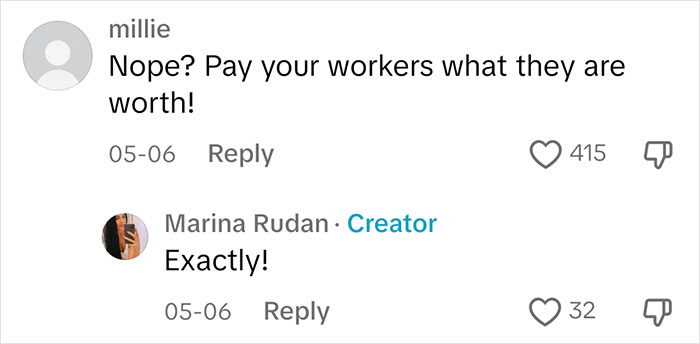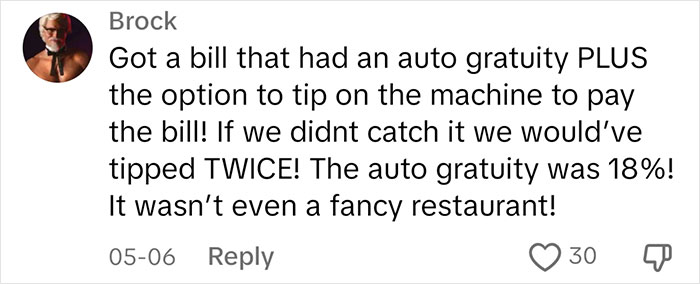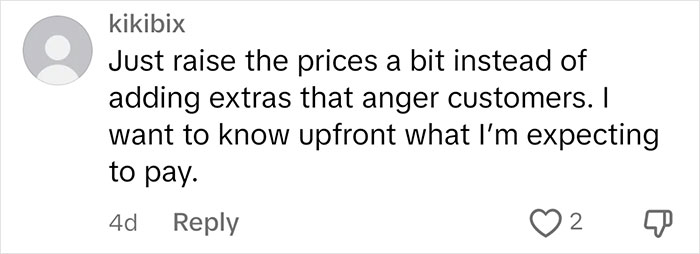Dining out seems to become more and more complicated every day. When eating at a restaurant, it’s important that you remember to tip the staff appropriately. If you want to avoid all of that, you can order takeout, of course. But if you choose to stay home, you’ll end up paying an arm and a leg for delivery. And if you pick it up, you’ll get to experience the joy of sitting in traffic while your food gets cold.
Meanwhile, it seems that restaurants are always finding new ways to add hidden charges onto our meals. TikToker Marina Rudan recently shared a video detailing the unexpected charge she found on a recent bill, so below, you’ll find the full video, as well as some of the replies viewers shared.
Dining out seems to become more expensive every day
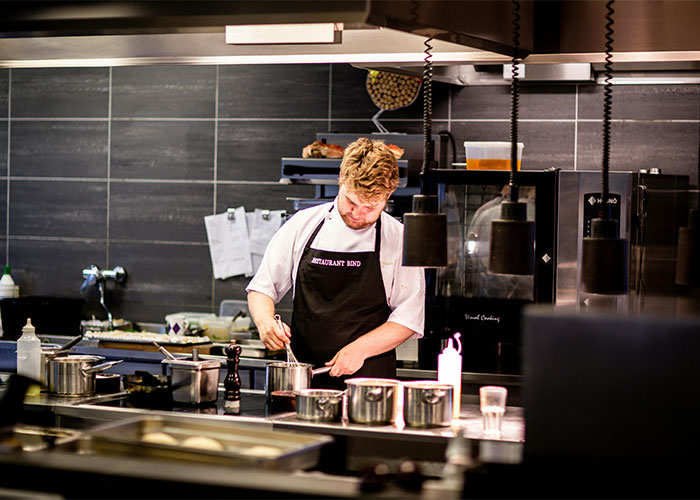
Image credits: Rene Asmussen / pexels (not the actual photo)
But when this woman noticed a “kitchen service charge” appear on her bill, she decided the restaurant had crossed the line
“Okay, so have we heard of a kitchen service charge? So I had asked my server, I’m like, ‘Hey, can you explain to me please what this kitchen service charge is?’, and she had informed me that the owner decided that his kitchen staff should be paid more money. And he automatically now has a kitchen service charge added to the bill.”
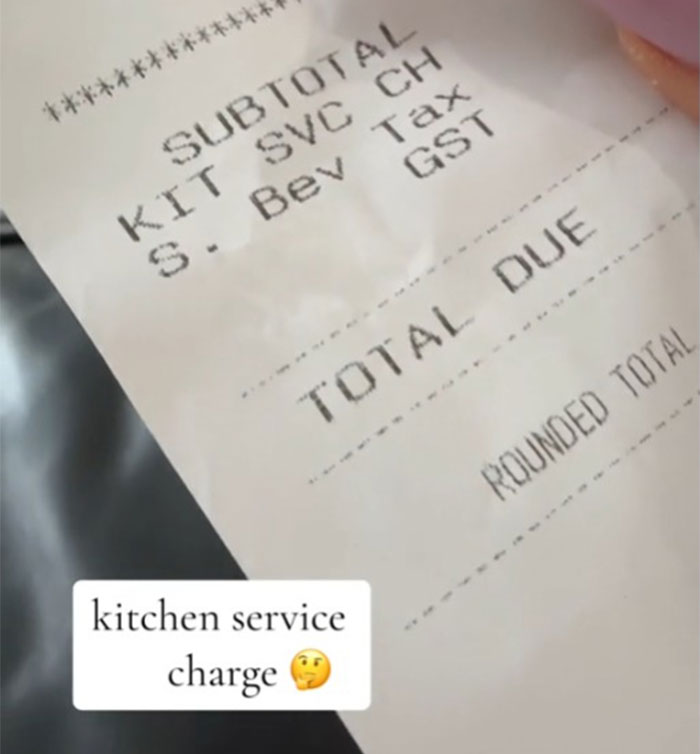
Image credits: marinaa.rudan
“And then I asked her, ‘Well, do you still have to tip out to back of house then when we tip you out?’ And she had said yes. So not only are we tipping 18-20%, but there’s an automatic service charge to back of house. I don’t care to tip out to kitchen, I just don’t like the fact that you did it in a shady way, like you’re adding on an automatic charge, and you don’t even let us know.”

Image credits: marinaa.rudan
“As if the owner wants the kitchen staff to make more money. Shouldn’t you be paying your staff more per hour instead of charging us or ask for an option ‘Would you like to add a kitchen service charge?’ Would you dine here now knowing that this is what they’re doing?”
You can watch Marina’s full video right here
@marinaa.rudan Can’t say it enough…always check your bill before you pay #restaurant ♬ original sound – Marina Rudan
Patrons are often prepared to add a tip on top of their bill when dining out
Despite the fact that there are over a million people working in restaurants in the United States alone, the service industry is not an easy field to be in. Employees have to deal with difficult, hangry customers, abide by strict health and safety regulations, be on their feet for their entire shifts and for many, rely on the generosity of customers to take home a decent wage. That’s why it’s so important for many servers that we all tip well when dining out.
While tipping culture varies from country to country, in the United States and Canada (where this video was filmed), diners are typically expected to tip 15-20% of their bill. This is because, in the US, the federal minimum wage for tipped employees is a measly $2.13 an hour. That’s over $5 an hour less than the federal minimum wage for workers who don’t receive tips.
Now, if you’ve never worked in a restaurant or you live in a country where tipping isn’t expected, it might seem ridiculous to you to spend 20% more than what your bill says. But if you choose to dine in a restaurant where servers are working for tips, it’s respectful to honor the unspoken agreement between server and patron. If they provide excellent service, diners should provide decent tips.
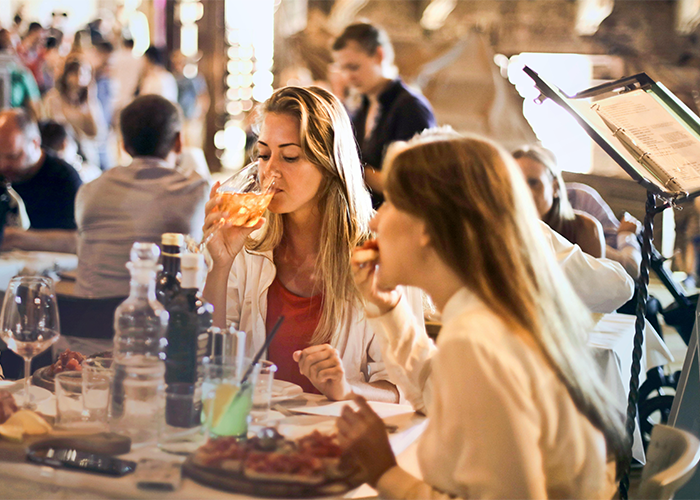
Image credits: Andrea Piacquadio / pexels (not the actual photo)
But customers aren’t usually expecting to be charged service fees
Tipping can become even more complicated when restaurants and owners start to micromanage exactly where that money is going. Some businesses might have tip pooling, which requires staff to share a portion or all of their tips evenly among other team members. This might make sense in a coffee shop, for example, where only one employee is interacting with customers while the rest are busy making drinks.
Tip pooling might also benefit hosts, bussers, dishwashers, chefs, cooks and more. In Marina’s video, she mentioned that the server informed her that they all “tip out” to the back of house, meaning that they share some of their tips with the kitchen staff already. So why is it necessary to have another additional charge? Many customers are already fed up with tipping, so the vast majority are not going to be interested in yet another fee.
Now, a service charge in a restaurant is not an inherently bad thing. Some businesses have opted for them instead of tips, to ensure their staff members earn a living wage, and it can be a relief for customers to not have to worry about calculating an additional tip after dining. In the UK, the government even specifies that all tips, gratuities and service charges that customers pay must go directly to employees. But not every country and business is transparent about exactly where their “service charges” are going.
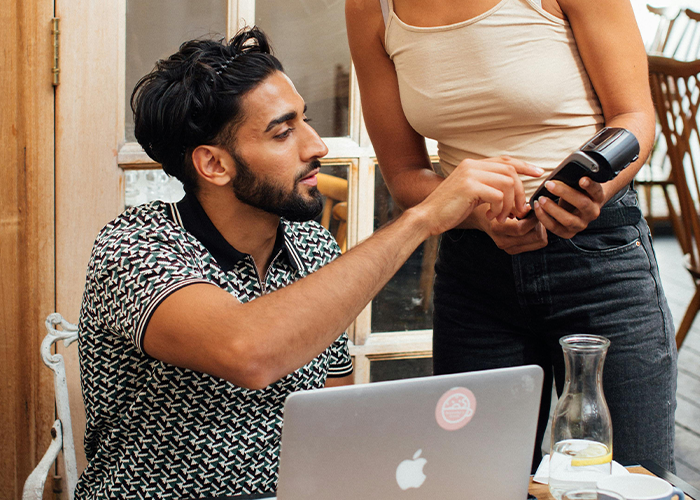
Image credits: Viktoria Slowikowska / pexels (not the actual photo)
It’s important for restaurants to be transparent with their staff and diners about where service fees are going
Kamila Bikbulatova, who worked as a runner and server at the Aviary in Chicago from 2019 to 2020, told the New York Times that her manager never explained how the money from the restaurant’s 20% service charge was being used. Meanwhile, a representative for the Aviary says the service charge is treated “simply as revenue,” and the restaurant can use it to pay employees or for other costs that come along with doing business.
Now, you might be thinking that the most logical solution to avoid all of this would be to simply raise menu prices and avoid service charges and tipping altogether. But according to the New York Times, “people don’t want to pay more for food.”
They explained that if restaurants raise their prices too much, patrons might be turned off by seeing how much they’re going to pay up front. Plus, dining out is a luxury that we’re not intended to do every day, Evan Leichtling, the owner of Seattle’s Off Alley, says.
We would love to hear your thoughts on this situation in the comments below, pandas. Would you eat a restaurant that added a hidden “kitchen service charge” without informing customers? Feel free to share, and then if you’re interested in reading another Bored Panda piece discussing tipping culture, look no further than right here!
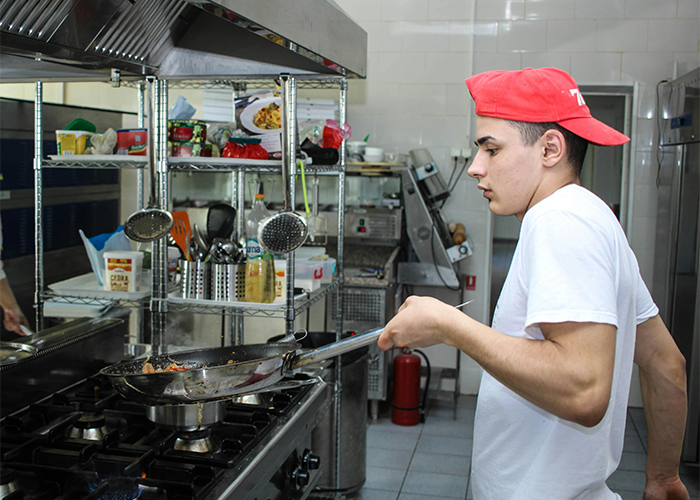
Image credits: Creative Vix / pexels (not the actual photo)
Viewers weren’t supportive of the service charge either, and many noted that they wouldn’t return to the restaurant
